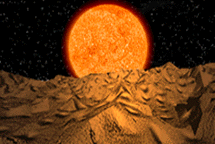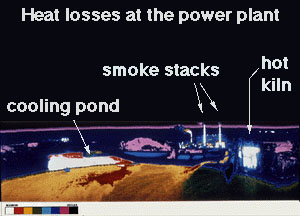ExploraTour: A Peek into the Lives of the Stars

What Happens to Low Mass Stars (<8 solar masses)?
STAGE 2: Red Giant Phase
When the hydrogen in the core is gone, the star is no longer supported against gravitational collapse. The core contracts and temperatures rise.
Eventually the temperature gets hot enough so that nuclear reactions start to convert the shell of hydrogen surrounding the core into helium. For a period of time that is about 20% of the time the star spent on the main sequence, this continues.
The higher temperatures cause the outer atmosphere to expand. As a result, the radius of the star increases and the surface cools. Because the star is bigger, the luminosity remains approximately constant even though the surface has cooled. The star is now a red giant.
While the outer atmosphere is expanding, the core (which is not being heated) collapses to dimensions about the size of the Earth. The temperature again increases, reaching about 100 million degrees.
Suddenly helium in the core begins to fuse to carbon and oxygen at a very rapid rate. Within a short time the helium is gone, and gravitational collapse continues.
Again temperatures rise enough so that the helium in a shell surrounding the core starts to fuse. This helium shell expands as the hydrogen shell at larger radial distance continues to fuse into helium. The star's outer layer expands again and the star repeats its rise to a red giant state. The shells continue to turn on and off during this stage.











